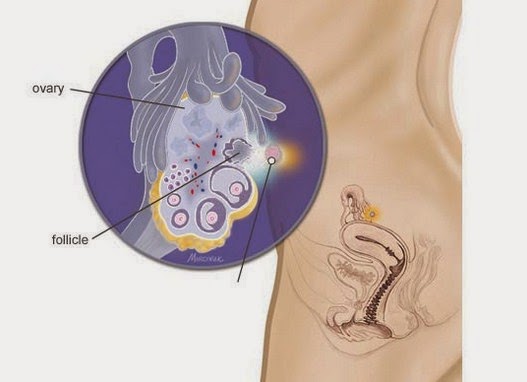For most women, especially for those who aren’t planning a pregnancy, week one goes by without them realizing they are pregnant. Even week 2 may go undetected. Lots of women’s monthly cycles are variable, so most women assume that when their monthly menstrual cycle is late, it’s just that — late. There aren’t any immediate, obvious pregnancy symptoms during the first week, but there are signs such as fatigue, loss of interest in things, mood swings, and the constant need to urinate. However, most women attribute these symptoms to PMS, rather than assuming they are pregnant.
The menstrual cycle lasts for approximately 28 days, although it can be as short as 24 days or as long as 35. It begins when an egg leaves the ovary and travels into the fallopian tubes, where it’s met by sperm and fertilized. From there the fertilized egg travels through the fallopian tubes and into the uterus, where implantation occurs.
Some people speculate a woman isn’t really pregnant during the first week of pregnancy, since fertilization takes place during the second week. This is the main reason why so many pregnancies go undetected during the first week.
Changes in Your Body at 1 Week Pregnant
Again, no noticeable physical changes take place during the first week, although many internal changes are happening. Common symptoms include digestive problems like gas, constipation, tender breasts, fatigue, mood swings, morning sickness, and hormonal changes. These symptoms vary from woman to woman, and most women don’t feel these changes until after the second week. Doctors advise that the first week of pregnancy is your “get out of jail free week.” If your diet isn’t perfect, or if you have a glass of wine with dinner, your pregnancy isn’t likely to be significantly affected.
Your Baby’s Development
During the first week of pregnancy there’s no major development of the baby, other than the egg leaving the ovary and traveling to the fallopian tubes. You’re not actually pregnant at this time, since conception itself doesn’t happen until about two weeks after your period ends. Still, this week is included in the pregnancy calendar to help the doctor calculate the first day of your last monthly menstrual cycle. It’s from this day that the nine-month cycle (or 40 weeks in medical terms) is calculated, and your EDD (expected due date) is determined.
Once the egg is fertilized, the cells begin to divide over the next seven to ten days. During the first week the “baby” is called a blastocyte. You can break the blastocyte into two parts — the external part of this blastocyte will become the placenta, and the internal part will be the embryo during the second week of pregnancy. If more than one egg gets released and fertilized, multiple zygotes may form. The zygotes have 46 chromosomes, an equal number from each parent, and the chromosomes have genetic material in them that determine the baby’s sex, hair color, features, skin color, height, and eye color.
